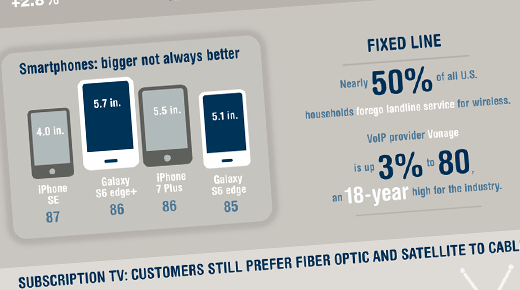Customer satisfaction with subscription television is down 1.5 percent to a score of 64 (on a 1–100 scale), tied with internet service providers for last place among 43 industries tracked by the American Customer Satisfaction Index (ACSI). New ACSI results show that wireless service is the only telecom industry to improve. Internet service providers, fixed-line telephone, and cell phones are unchanged, while pay TV is the only industry to deteriorate.
|
ADVERTISEMENT |
“The threat of competition does not appear to be encouraging improvement fast enough for pay TV,” says Claes Fornell, ACSI chairman and founder. “Customer service remains abysmal, and viewers are continuing to switch over to streaming services with much higher customer satisfaction. More than half a million subscribers defected from cable and satellite providers during the first quarter—the largest loss in history.”
…

Add new comment